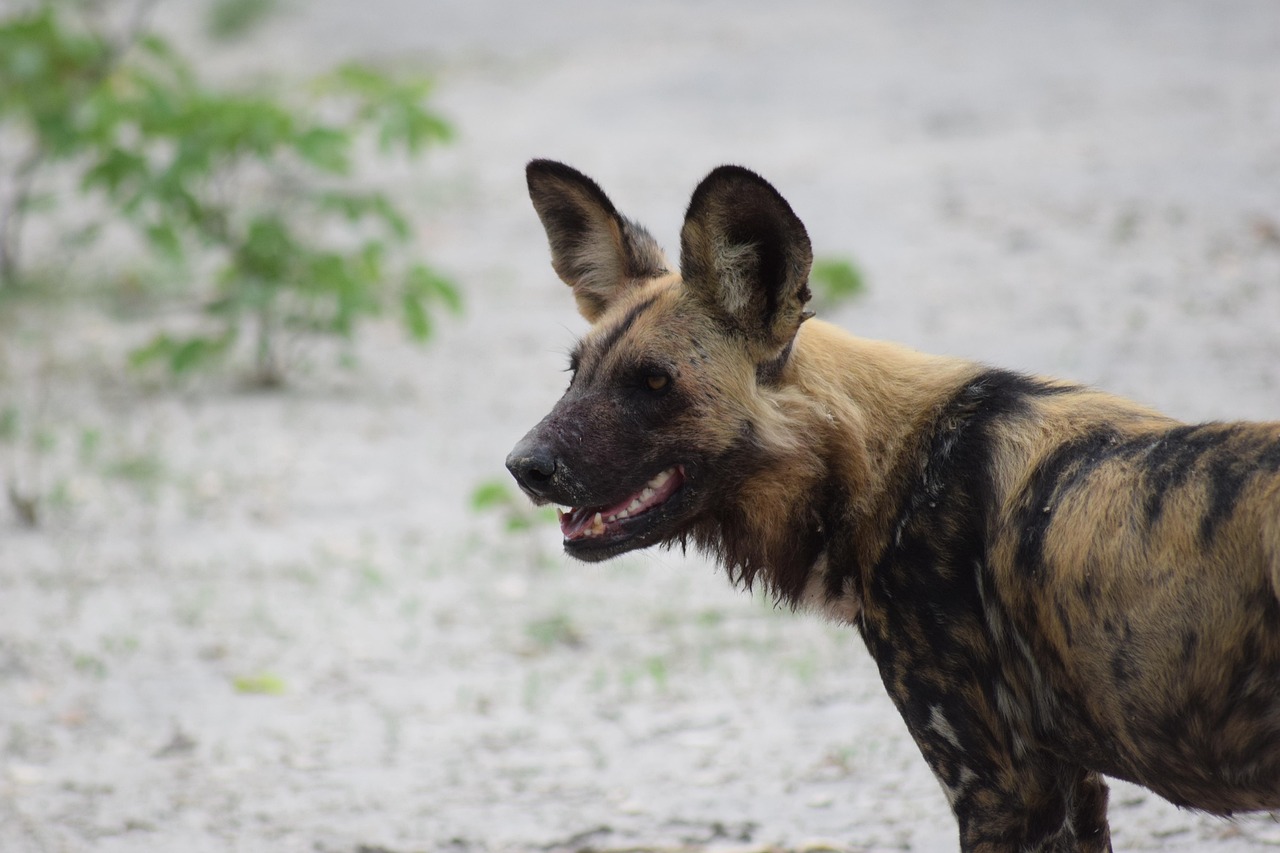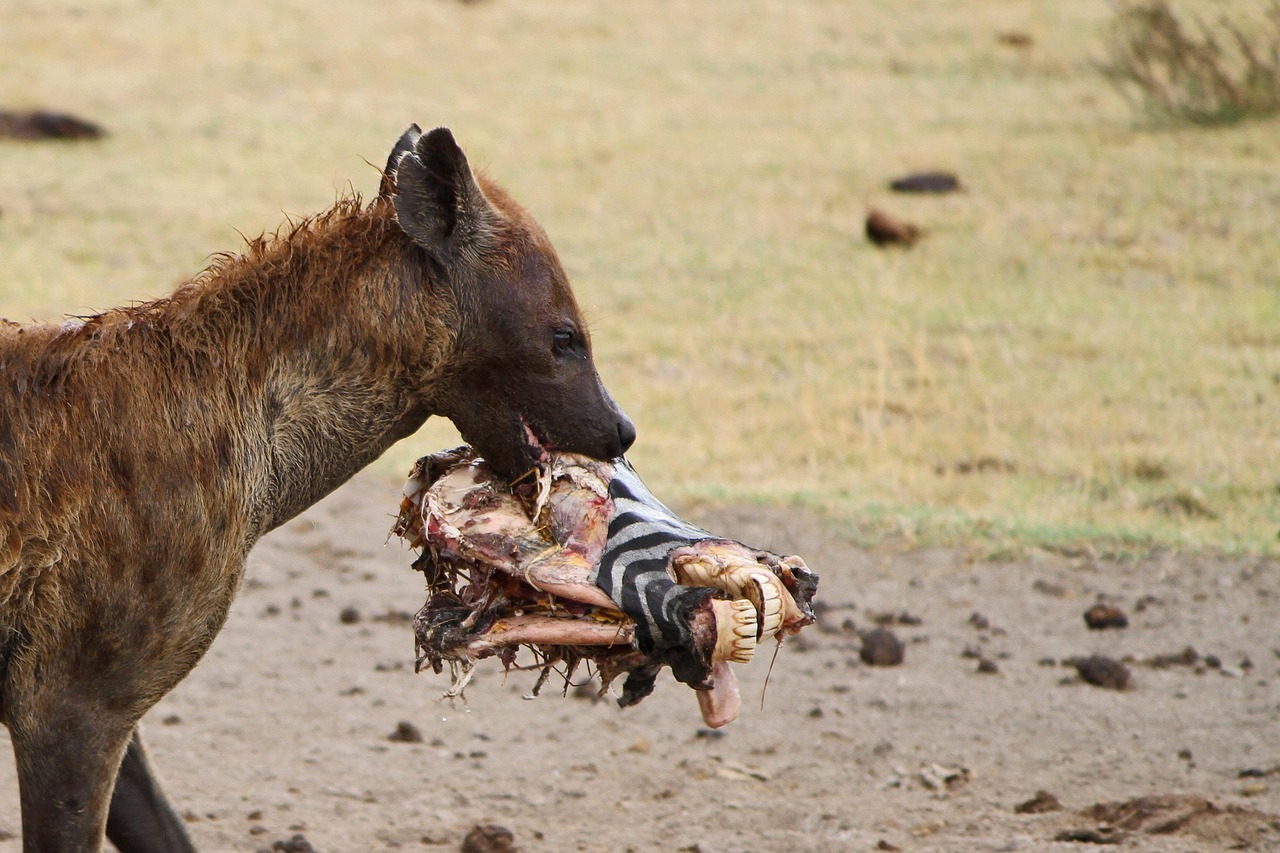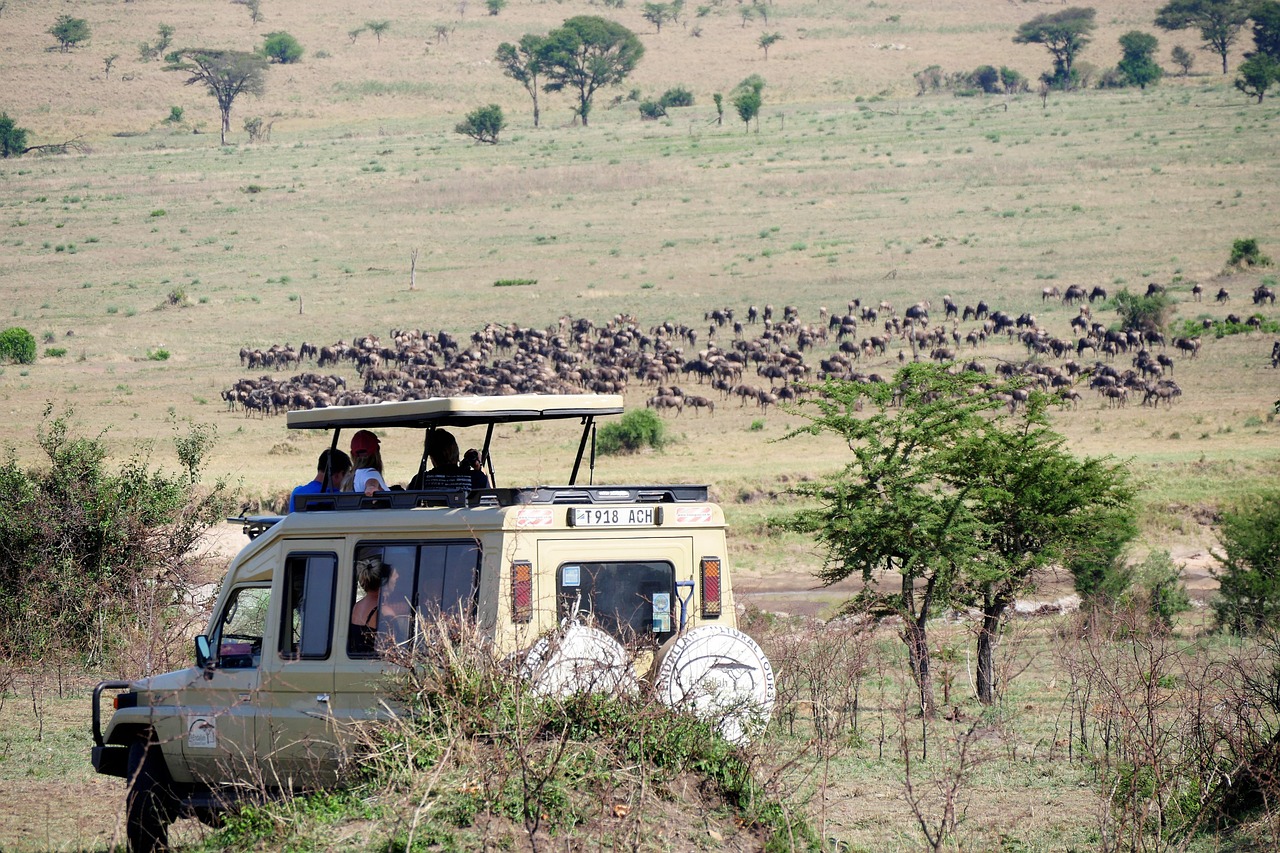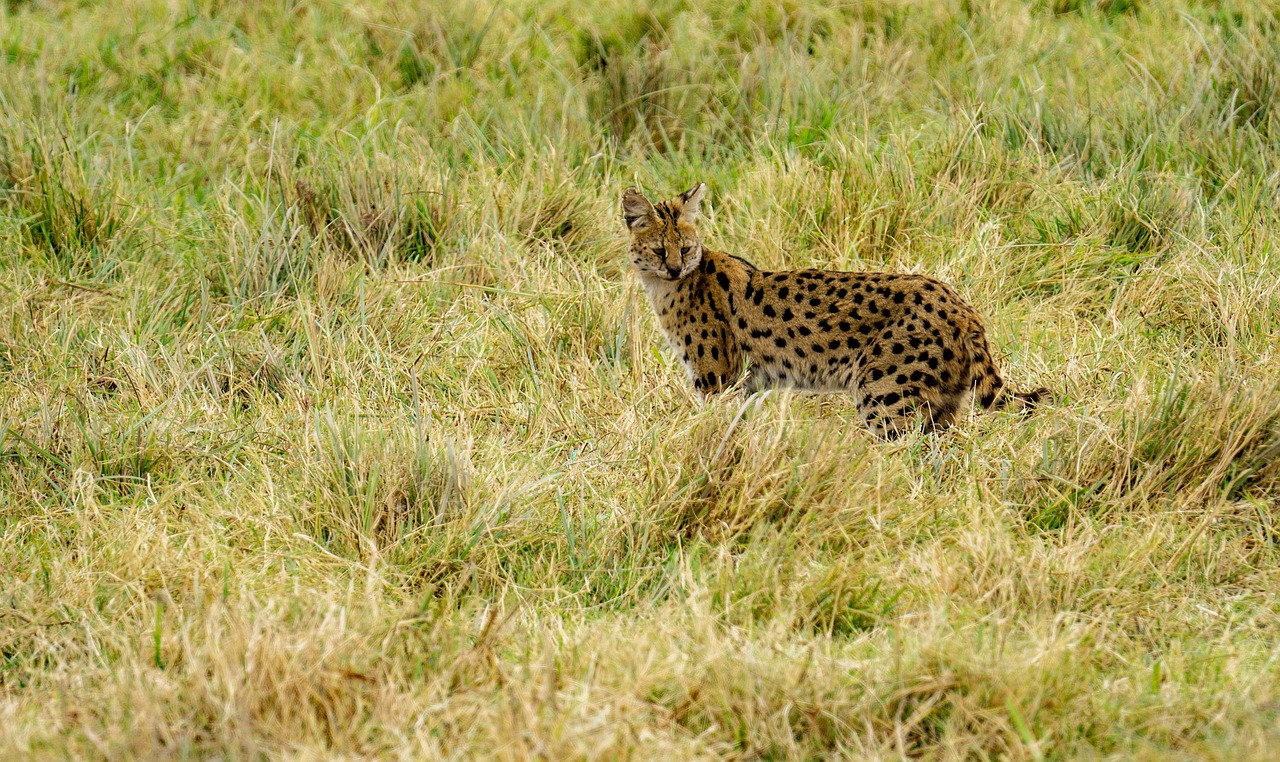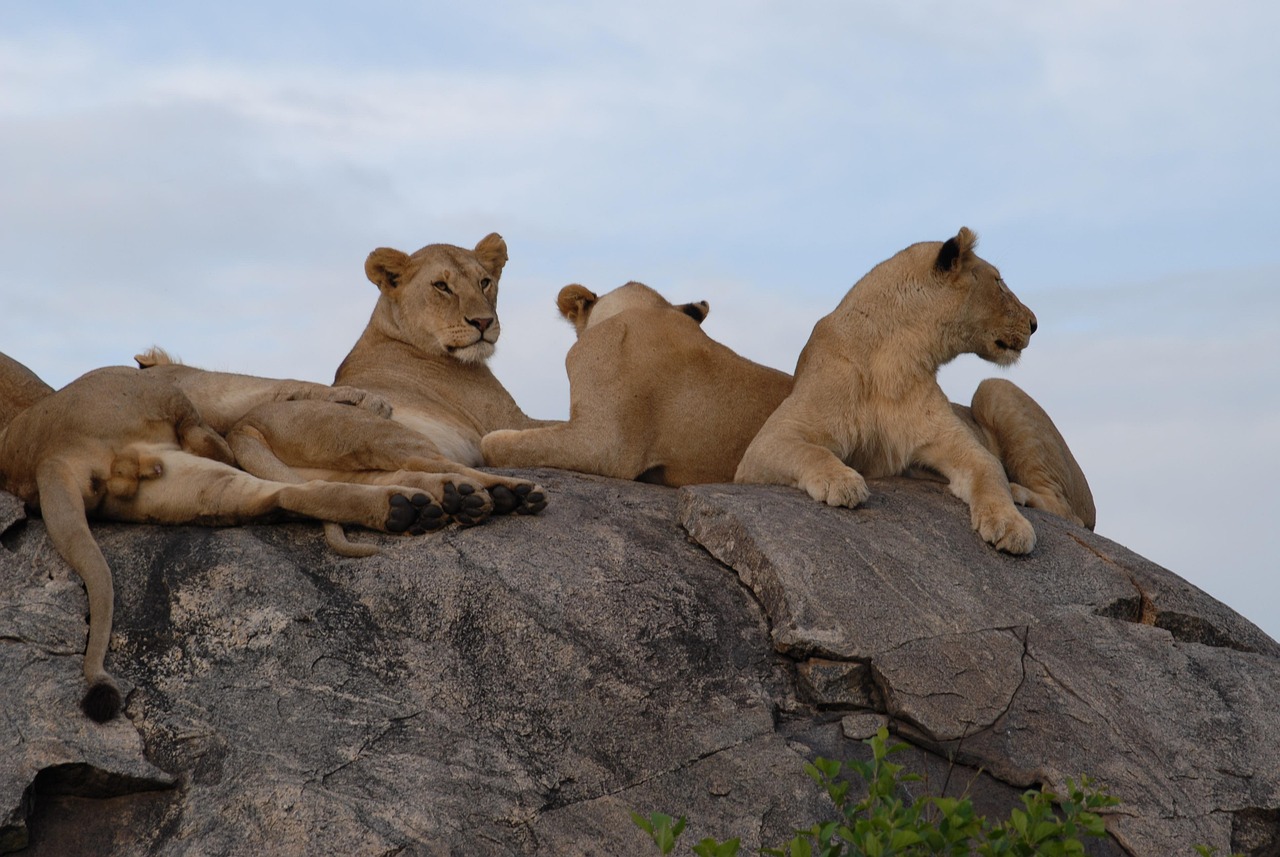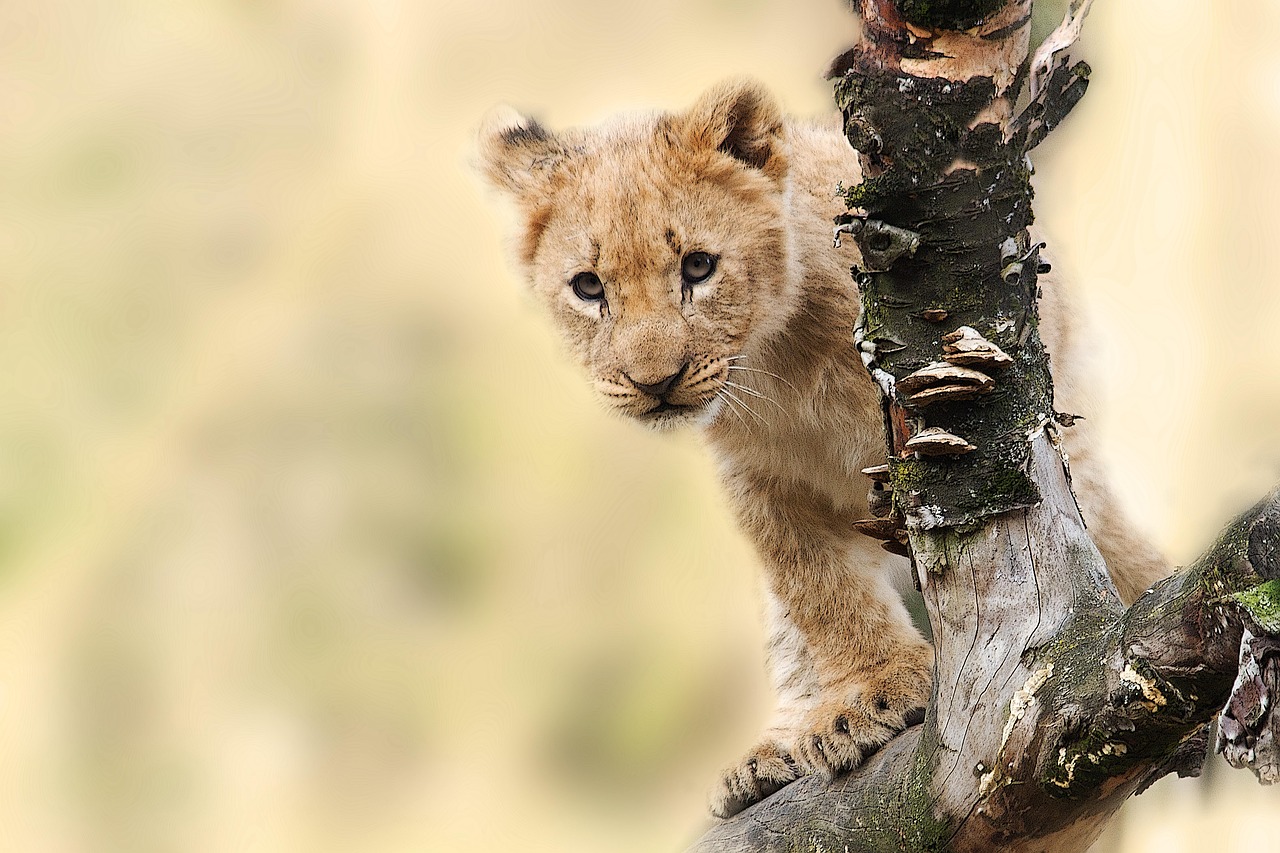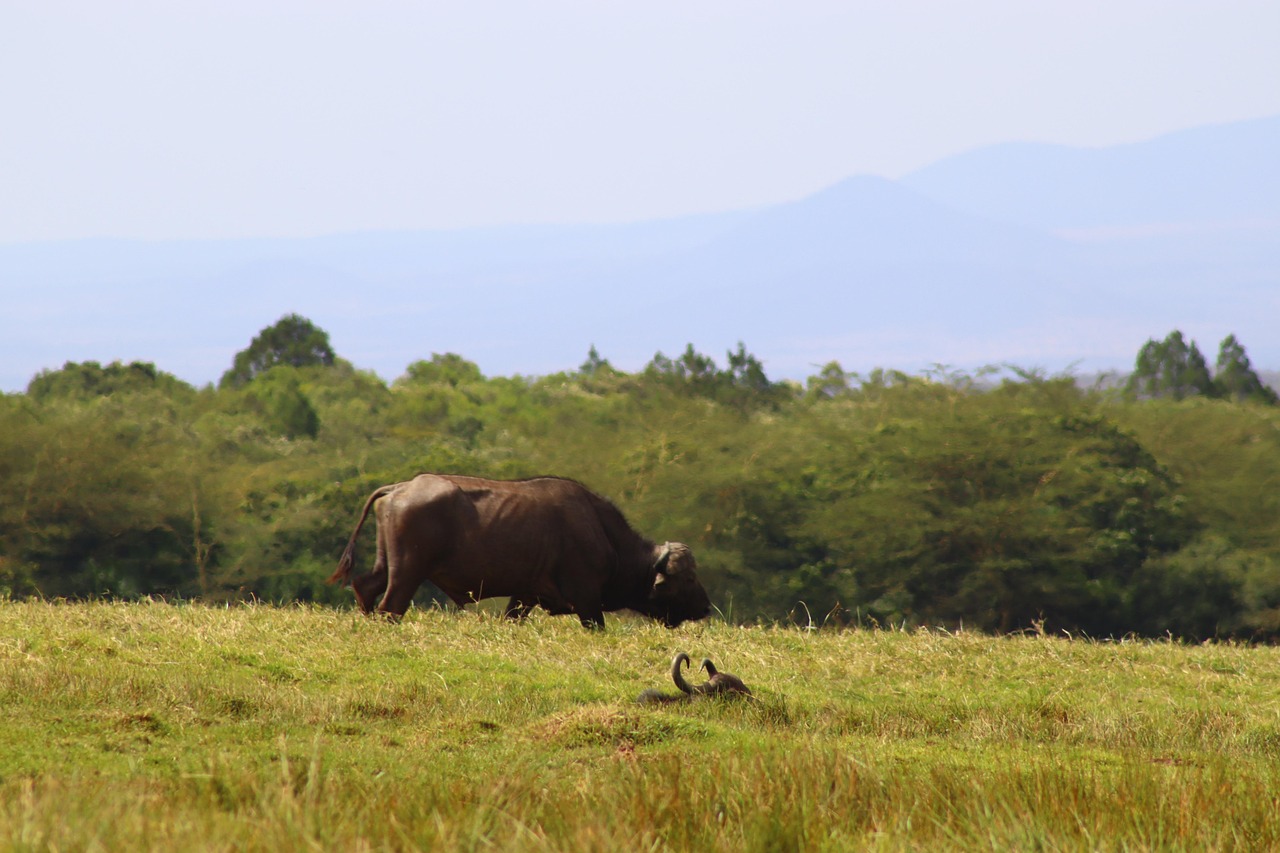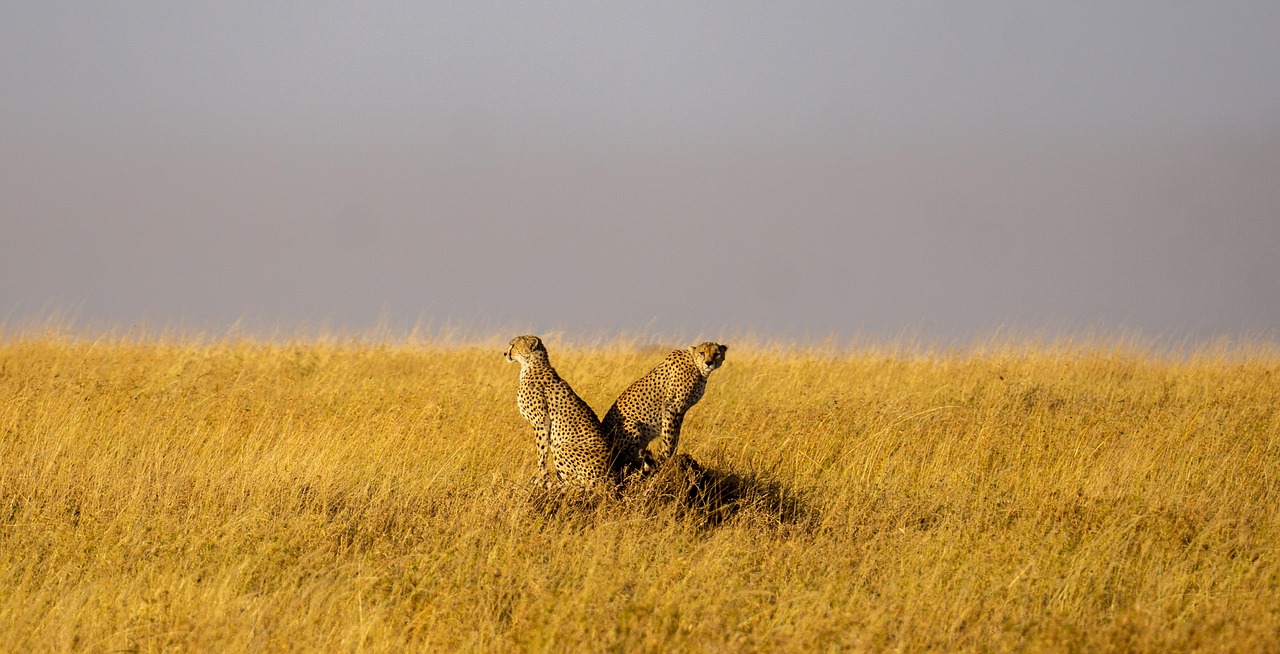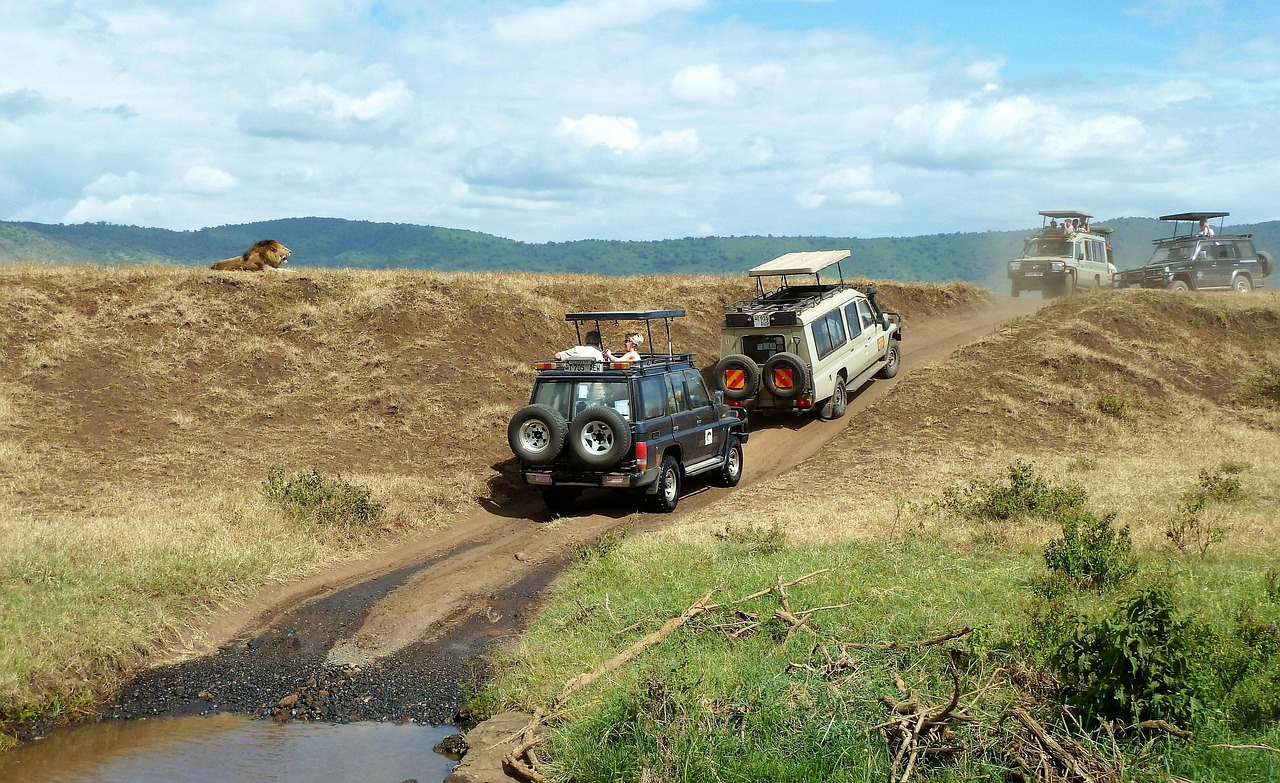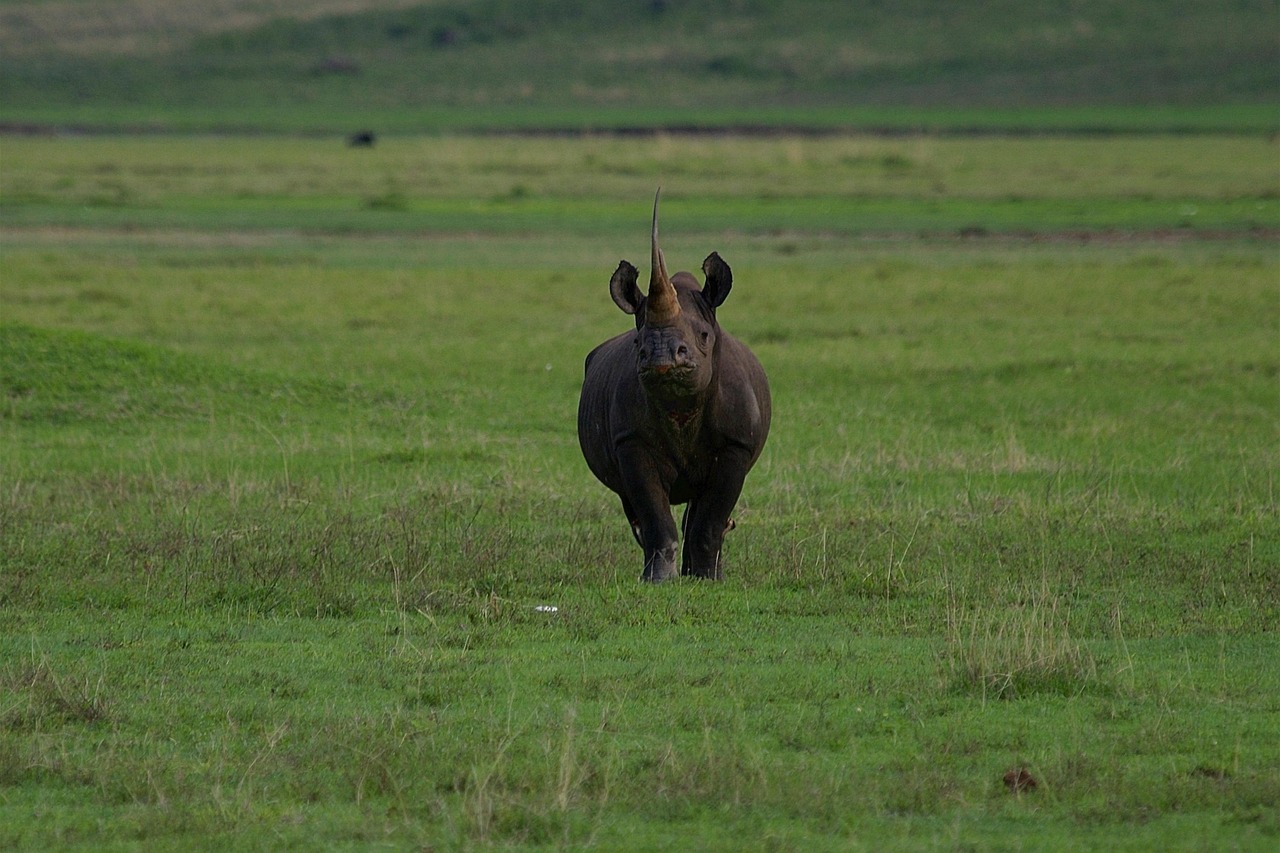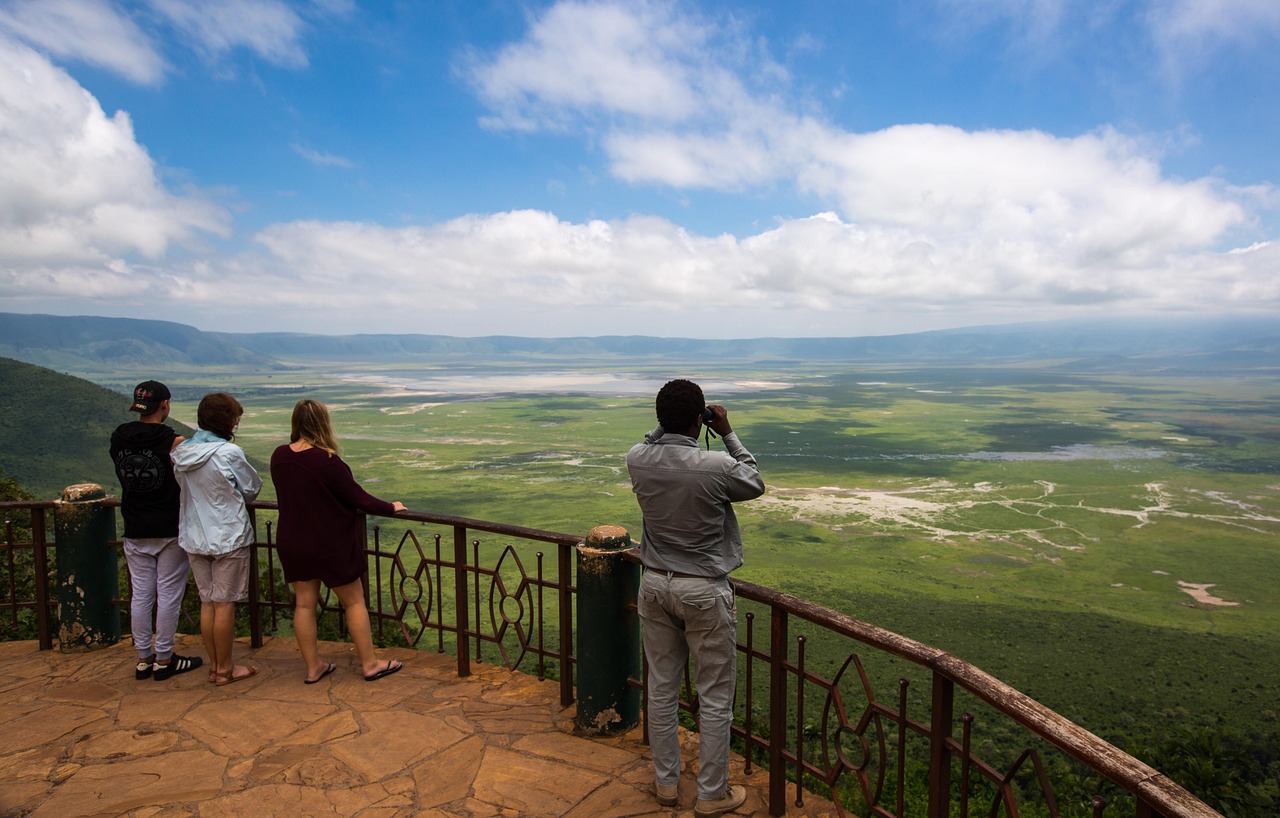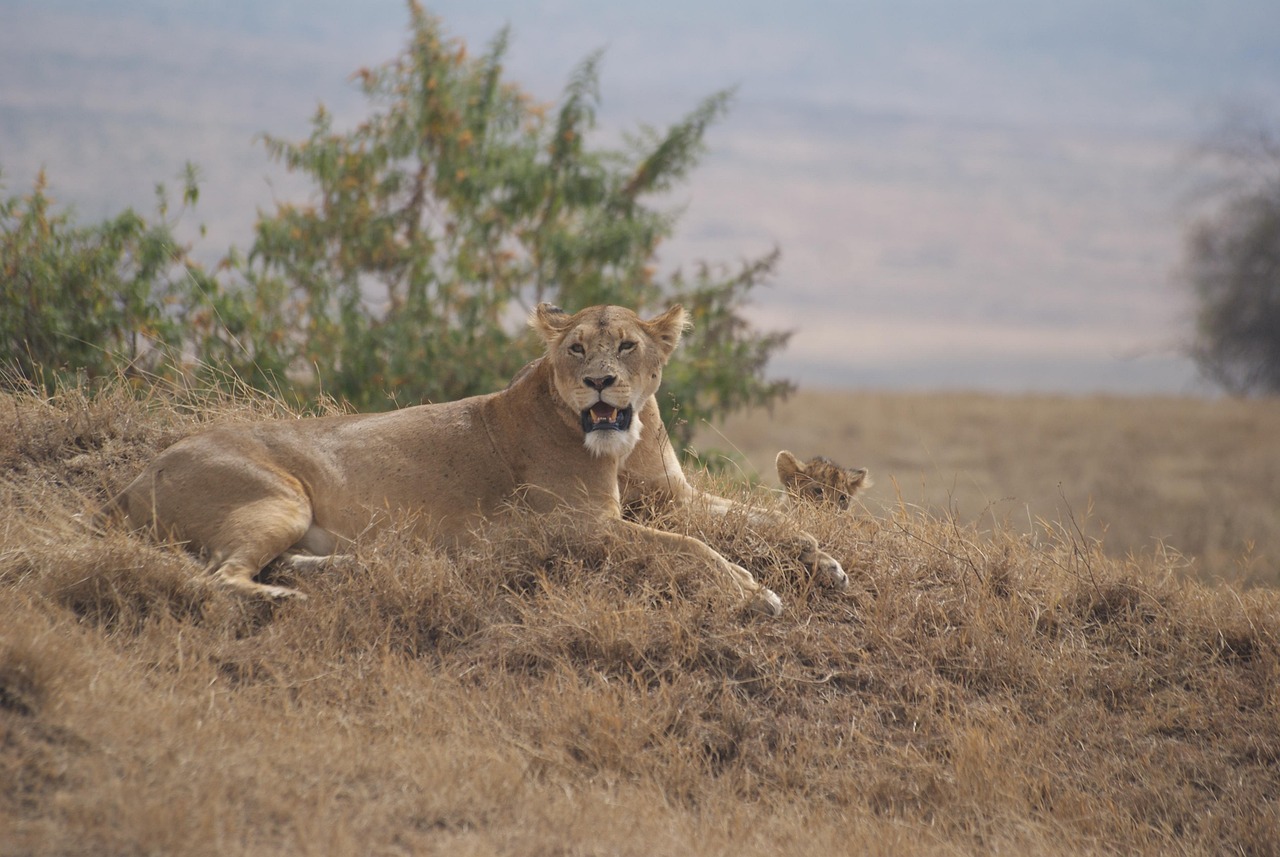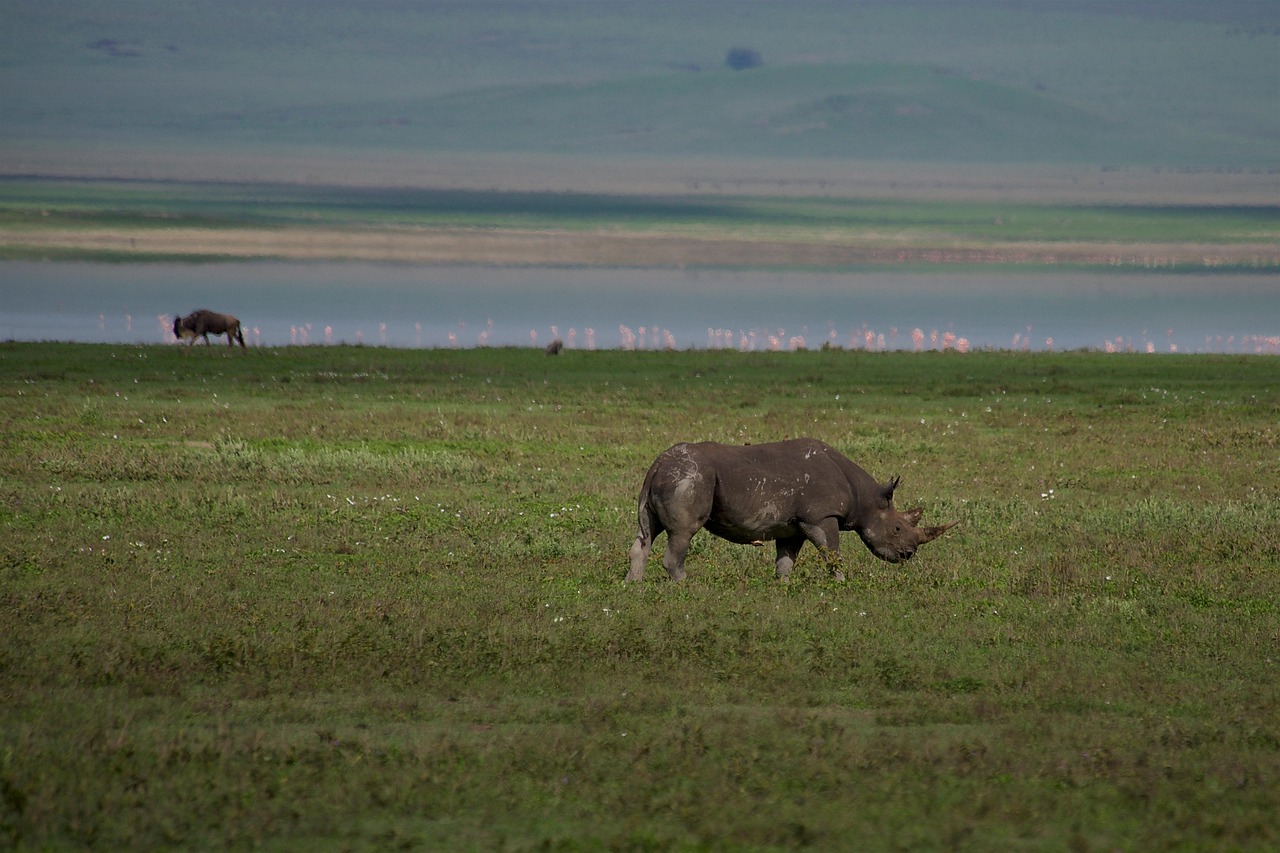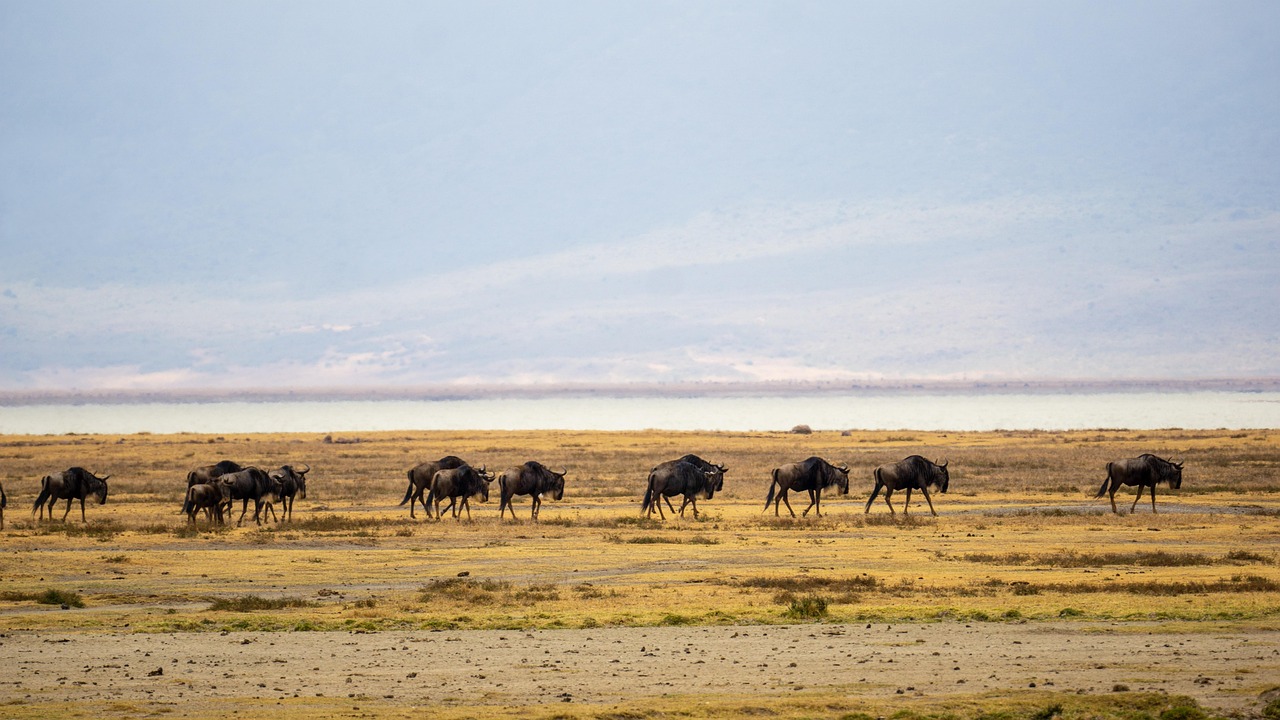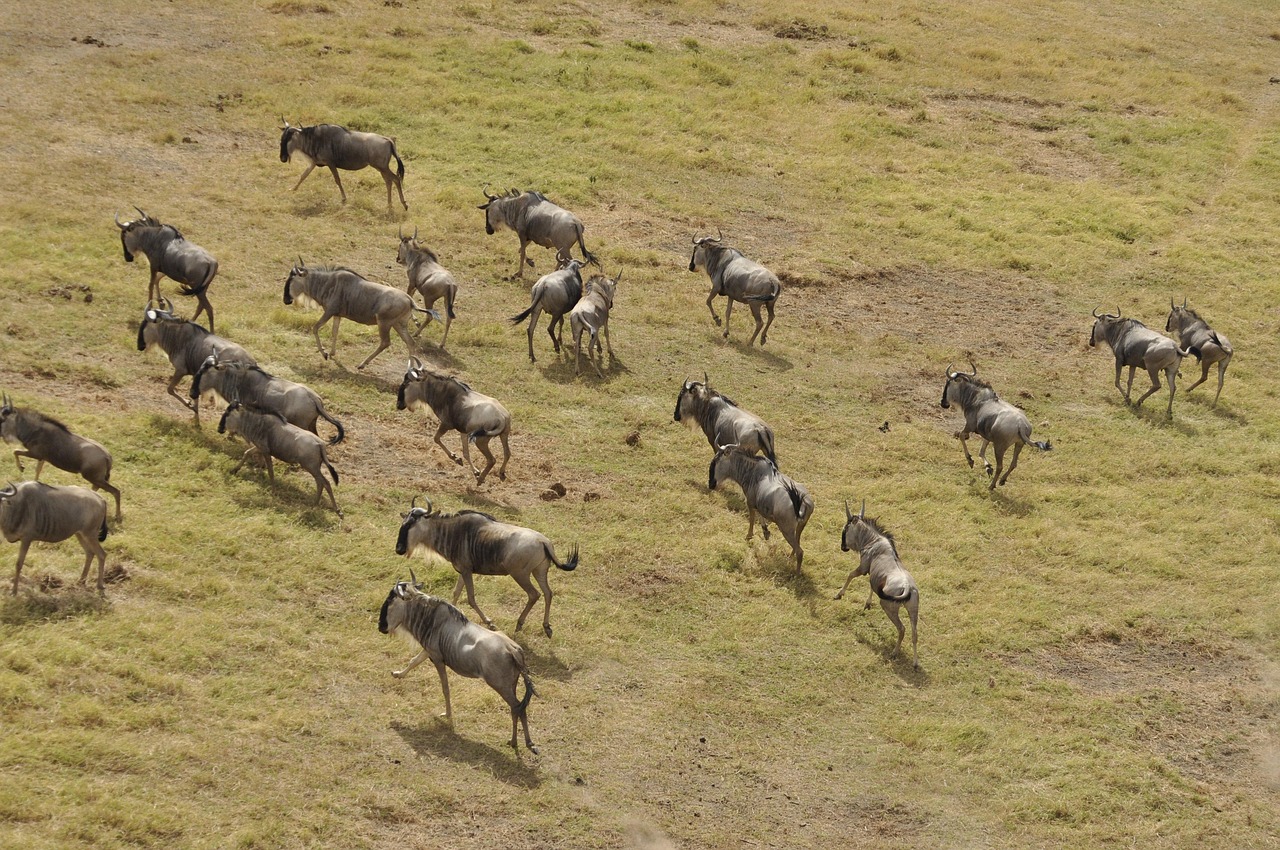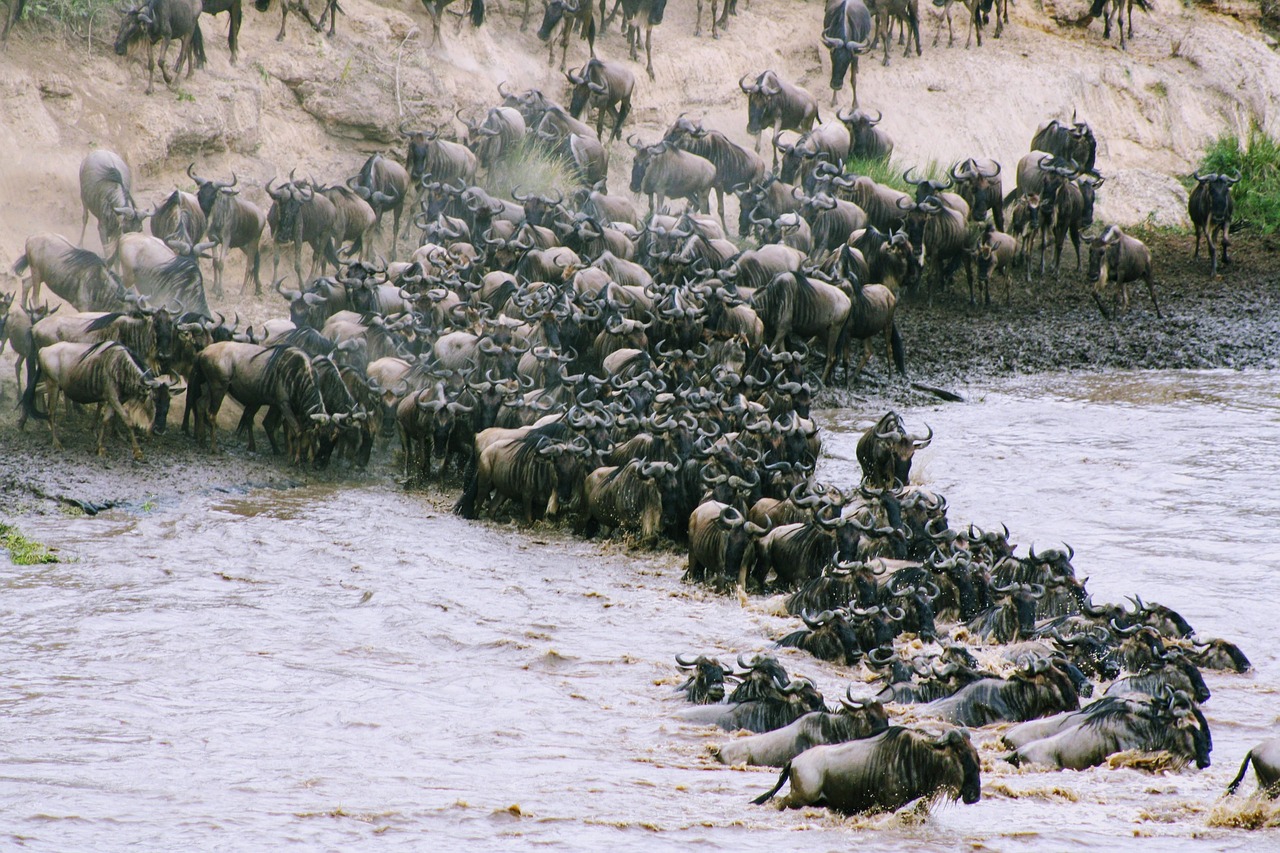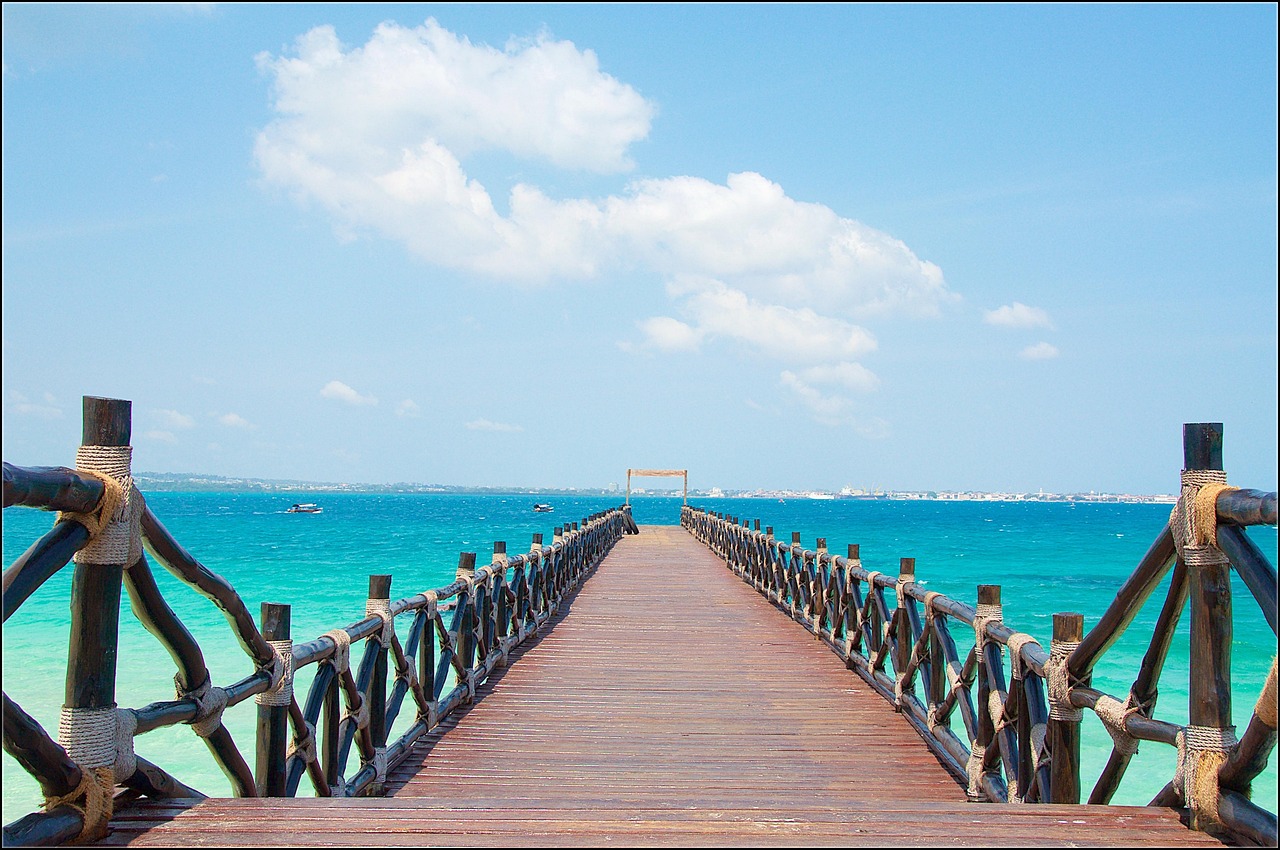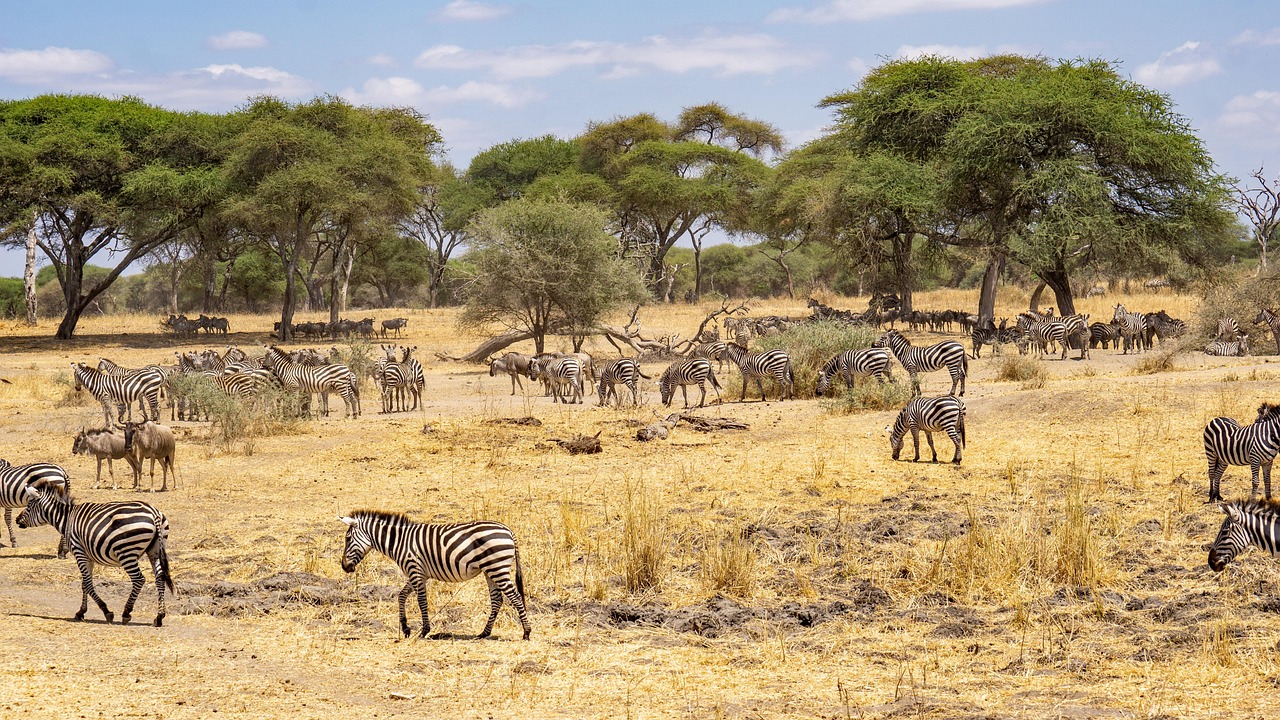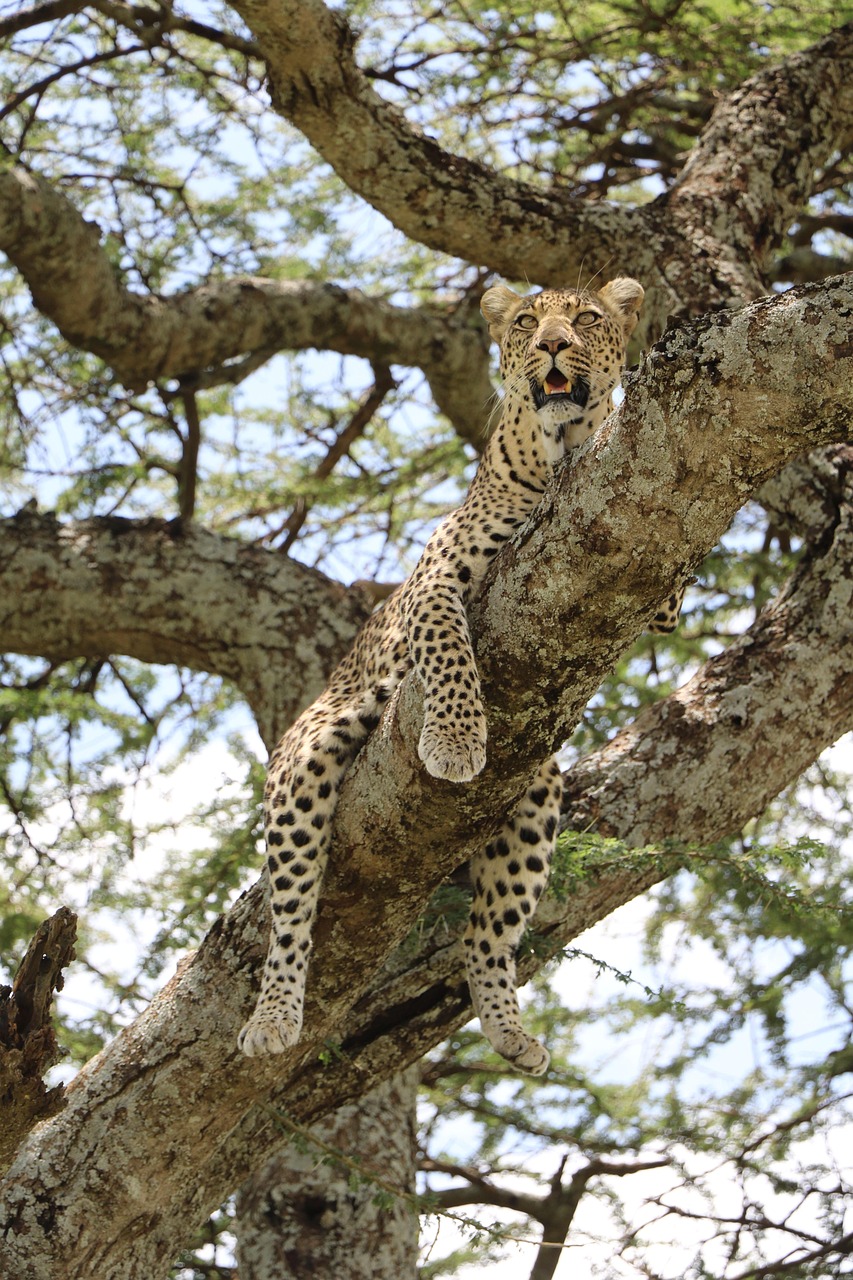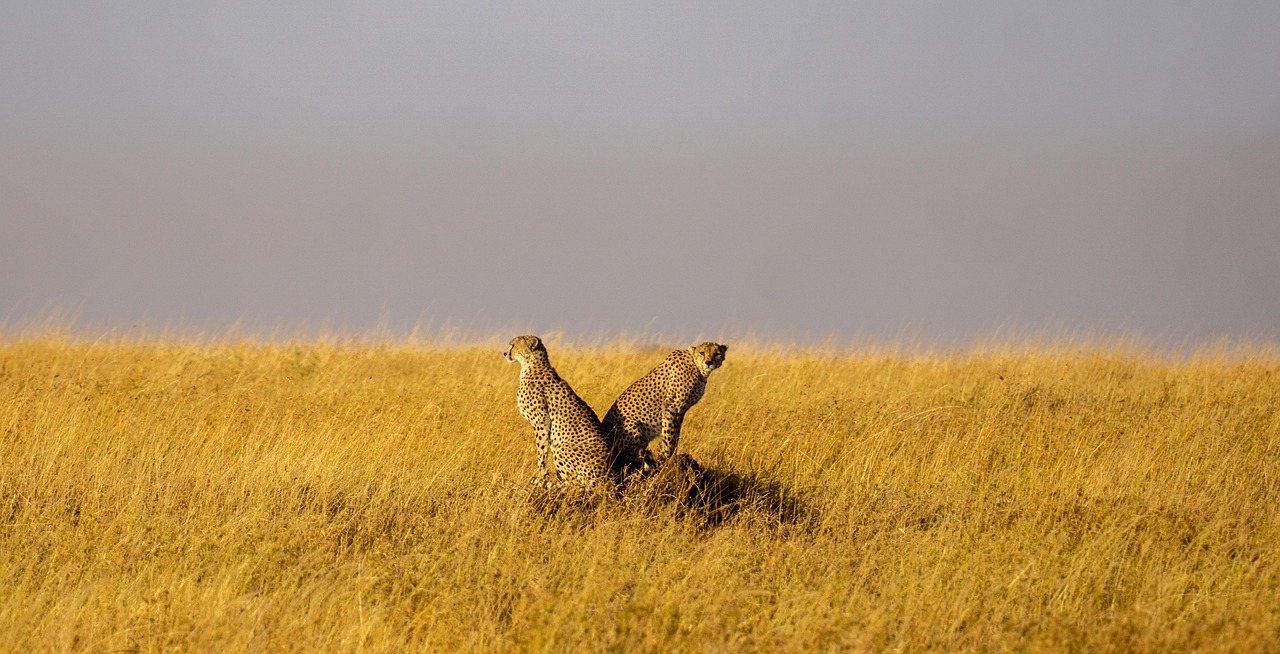
Tanzania
Everything you need to know about going to Tanzania for a safari. A complete travel guide.Tanzania
Overview
A Complete Travel Guide To Tanzania.
Everything you need to know before going on a safar to Tanzania.
Tanzania is one of East Africa’s most diverse and wildlife-rich safari destinations. Around 38% of the country is protected for conservation, offering expansive national parks, reserves, and conservancies. Popular safari circuits include the celebrated Serengeti National Park, famed for the Great Migration of wildebeest and zebra, and the Ngorongoro Conservation Area, with its ancient caldera supporting dense wildlife populations, including black rhino. The northern circuit—Serengeti, Ngorongoro, Lake Manyara and Tarangire—features abundant Big Five sightings and varied ecosystems.
Less visited but richly rewarding, the southern circuit includes Ruaha National Park and the Selous Game Reserve (now part of Nyerere National Park), offering quieter wilderness, boat and walking safaris, and high densities of predators. Beyond wildlife, Tanzania offers a unique blend of mountain adventure on Mount Kilimanjaro, western chimpanzee trekking at Mahale Mountains, and tropical beach time on the Zanzibar Islands.
Whether travellers seek dramatic migration, remote safari trails, cultural insight, or island relaxation, Tanzania delivers immersive experiences across ecosystems, with expert local guides facilitating seamless logistics.
Explore other countries:
Continue your safari planning journey across Africa’s top countries
Not sure if Tanzania is your perfect fit? Click below to explore and compare other safari countries.
Safety
Everything you need to know about safety in Tanzania
Tanzania is considered generally safe for travellers, both in wildlife areas and cities. Urban centres like Dar es Salaam, Arusha, and Stone Town require standard vigilance—avoid poorly lit streets or unlicensed taxis. On safari, wildlife zones are well-regulated and guided, with risk further minimised by professional operators.
Expert tip: Always follow your guide’s instructions during wildlife encounters, and don’t leave urban lodgings after dark without local advice.
A Deeper Understanding Of Safety In Tanzania
Tanzania holds a positive reputation among safari destinations. Still, travellers should be mindful of certain safety factors both in towns and while exploring nature.
In urban areas, petty crime such as snatch‑and‑grabs, pickpocketing, and occasional armed robbery can occur, particularly in tourist zones of Dar es Salaam, Arusha, and Zanzibar’s Stone Town. Take care when using taxis—only licensed vehicles—and secure valuables discreetly. Avoid walking alone at night and stay in well‑lit areas.
When visiting wildlife areas, the most significant risks come from unpredictable animal behaviour—not criminal activity. Always stay inside your vehicle unless the guide advises otherwise, and maintain a safe distance from animals. Walking safaris and boat rides are led by experienced guides and even armed wardens where required. Though rare, incidents can occur, underscoring the importance of respecting wildlife and not seeking unsafe photo opportunities.
Government travel advisories classify Tanzania under “Exercise increased caution”, citing violent crime risks and occasional terrorism threats, particularly near the Mtwara region close to the Mozambique border. Most tourism regions are unaffected, but checking official guidelines from your country remains advisable.
Overall, Tanzania offers a well‑managed and trusted safari experience, especially when travellers follow basic safety advice, rely on reputable operators, and remain alert to their surroundings.
VISA
Everything you need to know about visas for travel to Tanzania
Most visitors require a visa to enter Tanzania. A tourist visa (single‑entry) is available on arrival or online for USD 50, valid up to 90 days; U.S. passport holders must apply in advance for a multiple‑entry visa (USD 100, valid one year).
Use the following links to see your visa requirements when travelling to Tanzania:
Expert tip: Apply for an e‑Visa at least a few weeks before travel to avoid delays and ensure entry to both mainland Tanzania and Zanzibar.
A Deeper Understanding Of Visa Requirements For Tanzania
Visitors must have a valid passport with at least six months' validity and a blank page on arrival. Most nationalities can obtain a Tanzania visa on arrival or e-Visa, including the ordinary (single-entry) Visa valid for up to 90 days at USD 50. U.S. citizens must request a multiple-entry visa (USD 100, valid for one year) during the online application. The e-Visa system, launched in 2018, allows secure online submission—including payment and document upload—and covers both mainland Tanzania and Zanzibar when the first destination is specified.
Transit visas are available for direct transit stays (e.g. under 14 days) and require return/onward ticket proof. Travellers must carry documentation such as an itinerary and proof of funds. Some nationalities require referral visas that require prior approval by immigration authorities. For the most accurate personal requirements, check official immigration sources or embassies before applying.
Vaccinations
Vaccinations are needed to visit Tanzania.
Most travellers should ensure they are up to date with routine immunisations and receive recommended travel vaccines. Required proof of yellow fever vaccination applies only if arriving from a yellow fever-risk country. Additional vaccines are advised based on itinerary and exposure.
- Vaccinations Required: Yellow fever (if arriving from a risk country)
- Use the following link to find vaccination information for Tanzania: https://skyteam.traveldoc.aero/
Expert tip: Schedule a travel health appointment 6 to 8 weeks before departure to allow time for vaccine doses and boosters.
A Deeper Understanding Of Vaccination Requirements for Tanzania
All travellers should have current routine vaccines, including MMR (measles‑mumps‑rubella), Tdap (tetanus‑diphtheria‑pertussis), polio, influenza, chickenpox, shingles, and pneumonia where recommended. For travel in Tanzania, Hepatitis A and Typhoid are commonly advised due to food and water exposure. Hepatitis B may also be recommended for extended stays or higher-risk activities. Rabies vaccination is advised for long-term travellers, those working outdoors or in remote areas, or those likely to encounter animals. Meningococcal vaccine may be suggested if visiting during the dry season or for high-risk individuals in susceptible regions.
No general yellow fever vaccination is required unless arriving from a country on the WHO’s risk list; in such cases, travellers must present a valid International Certificate of Vaccination or Prophylaxis (ICVP) on arrival. Malaria protection involves medication rather than vaccination—consult your healthcare provider for prescription prophylaxis based on regions in Tanzania under 1,800 m elevation.
Vaccination planning should reflect seasonal risks, travel style (e.g. urban vs remote or trekking), and personal health. Routine boosters like MMR, Tdap, and polio are essential. Vaccines like rabies, typhoid, Hepatitis A/B, and meningitis offer added protection depending on itinerary details.
Weather and climate
Everything you need to know about weather and climate in Tanzania
Tanzania experiences a distinct wet and dry cycle: the dry season (June–October) brings clear skies and moderate temperatures, while November–May sees two rainy periods with higher humidity, especially in coastal and lowland areas.
Seasonal Breakdown:
- Summer: June to October is Tanzania’s dry season. Average lows range from 15 °C (59 °F) to highs of around 27 °C (81 °F). Rainfall is minimal (under 30 mm/1.2 in), humidity falls, and UV levels are higher—excellent for clear-sky safaris.
- Winter, from November to May, includes both short rains (November to December) and long rains (March to May). Average lows of 22 °C (72 °F) to highs near 30 °C (86 °F), with rainfall up to 150 mm (6 in) in the wettest months and elevated humidity.
Expert tip: Pack layered clothing for evenings at high altitudes, and consider waterproofs if travelling between March and May.
A Deeper Understanding Of Weather And Climate In Tanzania
Tanzania’s climate is shaped by bimodal rainfall in the north and unimodal patterns in the south and west. The long rains (March–May) bring daily afternoon showers, especially in southern parks, creating lush landscapes but often muddy roads.
The dry season (June–October) is the ideal safari window—cool nights in highland parks like Ngorongoro, and dry plains attract wildlife to remaining waterholes. Peak wildebeest migration river crossings occur in July–September.
From November to February, expect short, unpredictable rains. Coastal regions like Zanzibar remain hot and humid. At the same time, inland areas offer a quieter, green season perfect for birdwatching and calving scenes in the Serengeti.
Altitude matters: highland zones such as Arusha and Ngorongoro Crater can be 10–15 °C cooler at night. In contrast, coastal zones remain hot and humid year‑round, especially during the rainy seasons.
Table representing weather and climate in Tanzania by month
🟢 Excellent weather | 🟡 Fair weather | 🟠 Hot or rainy conditions | 🔴 Unfavourable travel period
| Month | Avg Low (C/F) | Average High (C/F) | Precipitation (%) | Rainfall (mm/in) | Rainy Days (Average) | Humidity (%) | UV Index |
|---|---|---|---|---|---|---|---|
| January | 18 °C / 64 °F | 31 °C / 88 °F | 20 % | ~50 mm / 2 in | ~5 | ~70 % | High |
| February | 18 °C / 64 °F | 32 °C / 90 °F | 15 % | ~75 mm / 3 in | ~5–7 | ~75 % | High |
| March | 20 °C / 68 °F | 30 °C / 86 °F | 50 % | ~130 mm / 5 in | ~10 | ~80 % | High |
| April | 20 °C / 68 °F | 28 °C / 82 °F | 65 % | ~200 mm / 8 in | ~15 | ~85 % | High |
| May | 19 °C / 66 °F | 28 °C / 82 °F | 60 % | ~150 mm / 6 in | ~12 | ~80 % | High |
| June | 15 °C / 59 °F | 26 °C / 79 °F | 10 % | ~15 mm / 0.6 in | ~2 | ~55 % | High |
| July | 14 °C / 57 °F | 26 °C / 79 °F | 5 % | ~10 mm / 0.4 in | ~1 | ~50 % | High |
| August | 14 °C / 57 °F | 26 °C / 79 °F | 5 % | ~10 mm / 0.4 in | ~1 | ~50 % | High |
| September | 15 °C / 59 °F | 27 °C / 81 °F | 10 % | ~25 mm / 1 in | ~2 | ~55 % | High |
| October | 17 °C / 63 °F | 28 °C / 82 °F | 30 % | ~40 mm / 1.6 in | ~5 | ~65 % | High |
| November | 19 °C / 66 °F | 29 °C / 84 °F | 40 % | ~130 mm / 5 in | ~8 | ~75 % | High |
| December | 20 °C / 68 °F | 30 °C / 86 °F | 35 % | ~100 mm / 4 in | ~7 | ~75 % | High |
When To Go
Everything you need to know about the best time to visit Tanzania:
The prime window for a safari is during the dry season (June to October), when wildlife congregates around water points and the Great Migration is most active—a time offering clear skies, excellent game viewing, and fewer mosquitoes.
- High season: June to October (also January–February for calving)
- Low season: March to May
Expert tip: Visit in September to enjoy the Mara River crossings with fewer crowds and better value for money.
A Deeper Understanding Of The Best Time To Visit Tanzania
Tanzania’s long dry season (June–October) is widely regarded as the best safari period, offering the clearest weather, minimal insect activity, and intense wildlife concentration as animals gather at predictable water sources. This window also features the Mara River crossings of the Great Migration in July to September.
A secondary high period is January to mid‑March, when the wildebeest calving season unfolds in the southern Serengeti, creating a wildlife spectacle with predator action and lush scenery.
In contrast, the long rains from March to May mark the low season—parks are quieter, many lodges in the southern circuit close, road access can be challenging, and wildlife dispersal makes sightings less consistent. Yet this time offers lower prices, fewer crowds, and excellent birdwatching and green landscapes, especially for avid nature lovers.
Table representing the best time to visit Tanzania:
| Month | Weather | Wildlife Viewing | Birdwatching | Temperature |
|---|---|---|---|---|
| January | 🌤️ | ✅✅ | 🐦🐦🐦 | ☀️ |
| February | 🌤️ | ✅✅ | 🐦🐦🐦 | ☀️ |
| March | 🌧️ | ✅ | 🐦🐦 | ☀️ |
| April | ⛈️ | ✅ | 🐦🐦 | ☀️ |
| May | 🌧️ | ✅ | 🐦🐦 | ☀️ |
| June | ☀️ | ✅✅✅ | 🐦🐦 | ☀️ |
| July | ☀️ | ✅✅✅ | 🐦🐦 | ☀️ |
| August | ☀️ | ✅✅✅ | 🐦🐦 | ☀️ |
| September | ☀️ | ✅✅✅ | 🐦🐦 | ☀️ |
| October | ☀️ | ✅✅✅ | 🐦🐦 | ☀️ |
| November | 🌤️ | ✅✅ | 🐦🐦🐦 | ☀️ |
| December | 🌤️ | ✅✅ | 🐦🐦🐦 | ☀️ |
Table Legend:
Weather: ⛈️ Thunderstorms, 🌧️ Rain, 🌤️ Partly Cloudy, ☀️ Dry
Wildlife Viewing: ✅ Average, ✅✅ Good, ✅✅✅ Great
Birdwatching: 🐦 Average, 🐦🐦 Good, 🐦🐦🐦 Great
Temperature: ❄️ Cold, ☀️ Warm, 🔥 Hot
Getting Here
Everything you need to know about getting to Tanzania:
International travellers commonly arrive via major airports and organised regional flights.
- Main point of entry to Tanzania: Kilimanjaro International Airport (JRO) or Julius Nyerere International Airport (DAR)
- Effort to get to Tanzania: 🟡 Medium — international routes are frequent but may require connections
- Effort getting around Tanzania: 🟡 Medium — domestic flights and road transfers offer flexibility but require planning
- Best ways to get around Tanzania: ✈️ Air; 🚙 Transfers; 🚗 Self Drive
Expert tip: Book both your international and domestic flights well in advance—especially internal hops to remote parks—and use lodge transfer packages to streamline arrival logistics.
A Deeper Understanding Of Getting To Tanzania
By Air
Tanzania’s main gateways are Kilimanjaro International Airport (JRO) for the northern safari circuit and Julius Nyerere International Airport (DAR) near Dar es Salaam, ideal for the southern circuit and Zanzibar. Zanzibar has its international hub at Abeid Amani Karume International Airport (ZNZ) for direct access to coastal breaks. International flights from Europe, the Middle East or Africa connect via airlines such as Qatar Airways, Turkish Airlines, Ethiopian Airlines, and KLM. Domestic and charter operators—including Precision Air, Coastal Aviation, Auric Air—link to regional airstrips in parks like the Serengeti and Nyerere National Park for efficient access to remote camps.
By Road
Overland access is possible from neighbouring countries such as Kenya, Uganda, Rwanda and Zambia via the paved trunk roads T3 and T5. These routes offer solid connectivity but can be lengthy—for example, the drive from Dar es Salaam to Nyerere National Park can take around six hours with deteriorating surface conditions on the final leg roads. Self-driving is feasible in established circuits but requires comfort with long distances, occasional rough terrain, and reliable navigation.
Transfers and Accessibility
Once inside Tanzania, most travellers reach safari areas via lodges and tour operators that offer private transfers or small charter flights to airstrips closer to camps. These often form part of packaged itineraries. For regions without air access, road transfers via 4×4 vehicles are used—especially in the southern circuit. Many travellers also combine flights and transfers logically: for example, flying into JRO, then connecting via regional flights or roads to northern parks; or flying out from ZNZ when finishing in Zanzibar.
Why Visit
This is why you should visit Tanzania:
Africa’s premier safari destination, Tanzania, offers unmatched wildlife spectacle, diverse landscapes, and immersive cultural and beach experiences. Ideal for travellers seeking both adventure and relaxation.
Expert tip: Plan your route to combine a northern circuit safari (Serengeti, Ngorongoro) with a stay in Zanzibar for a seamless mix of wildlife and beach.
A Deeper Understanding Of Why You Should Visit Tanzania
Tanzania stands out for its year-round wildlife events, such as the Great Migration, and access to the continent’s highest peak, Kilimanjaro. Its national parks—across northern, southern and western circuits—offer varying experiences from high-density game to remote wilderness not found elsewhere. Language, infrastructure and safety also support easy travel logistics.
Great Migration in Serengeti
Millions of wildebeest and zebra traverse the Serengeti plains annually during river crossings between July and September, creating one of nature’s most dramatic spectacles.
Mount Kilimanjaro and diverse ecosystems
Climbing Mount Kilimanjaro, Africa’s highest freestanding mountain, is achievable even for non-technical trekkers. Tanzania also boasts forests, highlands and lakes—each with distinctive wildlife.
Zanzibar: beaches and culture
Following safari, unwind on the sandy beaches of Zanzibar, explore Stone Town’s spice markets and UNESCO architecture, and enjoy the blend of Swahili, Arab, Indian and African heritage.
Activities
Everything you need to know about safari activities in Tanzania:
From thrilling game drives in the Serengeti and Ngorongoro to close encounters on walking safaris, calm boat trips through the Selous (Nyerere) or on Lake Manyara, and cultural visits to Maasai or Hadzabe communities—Tanzania offers a full range of safari experiences. Photographic safaris, horseback rides, and mountain treks add further depth.
Expert tip: Combine multiple activity types—such as a classic game drive followed by a boat cruise or walking safari—to truly experience Tanzania’s variety. Explore activities available in Tanzania:
Birds
Everything you need to know about birdlife in Tanzania
Tanzania is a superb destination for birdwatchers year-round, with over 1,100 species. From vast wetlands with flamingos and waterbirds, to highland forests harbouring rare endemics and dramatic raptor migrations, the diversity is exceptional.
| Birding | Jan | Feb | March | April | May | June | July | August | September | October | November | December |
- Birds in Tanzania: Greater and Lesser Flamingo, Eurasian Roller, Steppe Eagle, Secretary Bird, African Skimmer, Fischer’s Lovebird, Ashy Starling, Superb Starling
- Best months for birding: November to April (wet season) for migratory and breeding species; June to October (dry season) for resident species near water sources and clear visibility
Expert tip: Visit during the wet season (November–April) for vibrant flamingo flocks, wetland migrants, and breeding activity, then head into the dry season (June–October) to see resident birds gathering around shrinking waterholes for easier sightings. Explore birds in Tanzania.
test
Wildlife
Everything you need to know about wildlife in Tanzania
Tanzania offers iconic species like lions, elephants, leopards, rhinos, buffalo, giraffes, zebra, and wild dogs, alongside rare antelope and forest mammals. A high density of predators, ungulates, and large herds makes for unforgettable wildlife viewing across diverse ecosystems.
- Best months for wildlife viewing in Tanzania: June to October (dry season), and December to February for calving and predator activity
Expert tip: Early morning and late afternoon game drives deliver the best sightings—combine northern parks for migration action and southern or western parks like Ruaha or Mahale for privacy and unique species. Explore wildlife in Tanzania.
A Deeper Understanding Of Wildlife In Tanzania
Tanzania holds some of the world’s densest wildlife populations, supporting thriving predator–prey dynamics, vast herbivore herds, and endangered species. The Serengeti and Ngorongoro Crater host the full Big Five. At the same time, Nyerere (Selous) and Ruaha offer quieter wilderness with reliable wild dog and rhino sightings. In the west, the Mahale Mountains protect one of the few habituated chimpanzee populations in Africa.
Table showing wildlife occurrences in Tanzania
🔵 Plentiful 🟢 Common 🟡 Uncommon 🔴 Sporadic ⚫ Non‑occurring
| Species | Frequency |
|---|---|
| Lion | 🔵 |
| Leopard | 🟢 |
| Cheetah | 🟢 |
| Spotted Hyena | 🔵 |
| Brown Hyena | 🟡 |
| Striped Hyena | 🟡 |
| Black‑backed Jackal | 🟢 |
| Side‑striped Jackal | 🟡 |
| Caracal | 🔴 |
| Serval | 🟡 |
| African Wild Cat | 🟡 |
| African Wild Dog | 🟡 |
| Aardwolf | 🟡 |
| White Rhino | 🔴 |
| Black Rhino | 🟡 |
| Elephant | 🔵 |
| Buffalo | 🔵 |
| Giraffe | 🟢 |
| Hippo | 🟢 |
| Zebra | 🔵 |
| Blue Wildebeest | 🔵 |
| Black Wildebeest | ⚫ |
| Sable | ⚫ |
| Roan | ⚫ |
| Eland | 🟡 |
| Oryx | ⚫ |
| Kudu | 🟡 |
| Waterbuck | 🟡 |
| Lechwe | ⚫ |
| Sitatunga | ⚫ predominantly western waterlogged habitats |
| Aardvark | 🔴 |
| Pangolin | 🔴 |
| Mountain Gorilla | ⚫ |
| Chimpanzee | 🟡 |
Where To Go
Everything you need to know about parks and reserves in Tanzania
Tanzania’s protected areas include national parks, game reserves, and private concessions, each offering different experiences. National parks such as Serengeti or Tarangire deliver structured routes and high wildlife density. Private or concession areas offer off‑road freedom, night drives and greater privacy, ideal for flexible luxury safaris.
Best Parks, Reserves and Concessions in Tanzania:
- 🥇 Serengeti National Park
- 🥈 Nyerere National Park (formerly Selous Game Reserve)
- 🥉 Tarangire National Park
Expert tip: Confirm if your lodge sits within a private concession or national park, especially if you aim for off‑road game drives or night safaris. Explore Tanzania Parks, Reserves and Concessions Below:
A Deeper Understanding Of Parks And Reserves In Tanzania
Serengeti National Park is Tanzania’s flagship reserve: expansive plains famous for the Great Migration, dense predator–prey interactions, and high annual visit numbers. It remains accessible yet awe‑inspiring.
Nyerere National Park in the south, previously Selous Game Reserve, is the country’s largest protected area. Now a national park, it offers wilderness, vast landscapes and boat safaris on the Rufiji River, with far fewer visitors and rich populations of wild dogs, elephants and rhinos.
Tarangire National Park is known for its baobab‑studded lands and elephant herds, feeding along the Tarangire River during the dry season. It’s ideal for combining variety and photographic scenes.
While national parks provide reliable infrastructure and regulated access, private concessions—though limited in Tanzania—allow greater flexibility, exclusivity and night or foot safari opportunities where permitted by lodge operators.
Regions
Everything you need to know about safari regions in Tanzania
Tanzania is structured into safari regions, large-scale areas combining multiple parks, reserves, towns and lodges. Understanding regions helps you navigate logistics, wildlife diversity, and select the style of safari—whether high-traffic or exclusive off-grid.
Best regions in Tanzania:
- 🥇 Northern Safari Region
(only the safari region is listed for Tanzania on Simakade)
Expert tip: Choose lodges within private concessions in the Northern Safari Region if you prefer off-road game drives, uninterrupted wildlife views, and fewer crowds.
Explore Tanzania safari regions below:
A Deeper Understanding Of Safari Regions In Tanzania
Tanzania’s singular region on Simakade is the Northern Safari Region, which includes Serengeti, Lake Manyara, Tarangire, Arusha and Kilimanjaro national parks—offering both high-density wildlife and flexible lodge options. It is the country’s most visited circuit. It supports well-connected logistics from Kilimanjaro International Airport and the town of Arusha.
There are no other officially listed regions under Simakade’s taxonomy for Tanzania, so the Northern Safari Region alone provides the core safari experience—combining world-renowned wildlife, varied landscapes, and reliable infrastructure—all within one region.
Pros & Cons
The pros and cons of a safari to Tanzania
| Pros | Cons |
|---|---|
| ✅ World-renowned wildlife events: Experience the Great Migration in Serengeti and predator dynamics in Ngorongoro. The Times+9Wikipedia+9The Times+9 | ⭕ Peak-season crowds: July to September, especially at Mara River crossings, can see many vehicles and high tourist volumes. The Daily TelegraphFollow Alice |
| ✅ Vast, varied landscapes: From open plains to baobab-studded woodlands and highland forests, offering diverse safari environments. WikipediaWikipedia | ⭕ Travel logistics can be complex: Reaching southern parks or remote areas may involve multiple flights or long drives. WikipediaTanzania-Experience |
| ✅ Fewer visitors in remote parks: Regions like Selous (Nyerere) and Ruaha offer tranquil, less-visited wilderness. WikipediaThe Daily Telegraph | ⭕ Weather variability: Heavy rains in March–May can disrupt travel, lodge openings, and wildlife viewing. African Scenic SafarisFollow Alice |
| ✅ Rich cultural and geographic variety: Combine safari with Kilimanjaro trekking, spice islands in Zanzibar, and Maasai cultural visits. The TimesWikipedia | ⭕ Cost of premium experiences: Private flights, luxury lodges, and multiple activities can significantly increase trip costs. exploreeastafrica.comBusiness Insider |
| ✅ Extended viewing season: Migration viewing window spans several months, with year-round resident wildlife spotting. Follow Alicegoshenisafaris.com | ⭕ Accommodation demand: High season sees rapid booking of premium lodges, requiring early reservations. Business InsiderFollow Alice |
| ✅ Conservation-supported tourism: Well-established national parks and reserves prioritise sustainability and habitat protection. WikipediaWikipedia |
Expert tip: Balance your itinerary between northern parks for iconic migration experiences and southern or remote reserves for solitude and wildlife density, booking key lodges and flights well in advance for best access and value.


